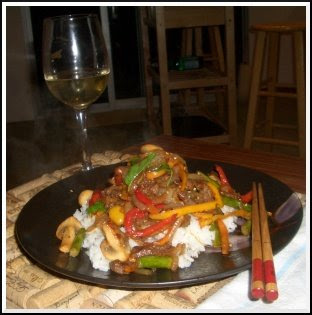 While living in the City or on the Peninsula one mostly shops ethnic markets, here, in Northern Marin, the food shopping strategy changes: the ethnic markets are few, on the other hand, we are so close to the agricultural communities of Napa and Sonoma, that it's easy to find small, very warm and personal local producers within reasonable driving distance. Every time the weather is nice on a weekend and I feel like going for a ride, I look for local food sources that I would visit over and over again. I call this my "Northern California ring of food" - it could be "Sonoma ring", but my main source is Marin Farmer's Market, and it is, obviously, in Marin.
While living in the City or on the Peninsula one mostly shops ethnic markets, here, in Northern Marin, the food shopping strategy changes: the ethnic markets are few, on the other hand, we are so close to the agricultural communities of Napa and Sonoma, that it's easy to find small, very warm and personal local producers within reasonable driving distance. Every time the weather is nice on a weekend and I feel like going for a ride, I look for local food sources that I would visit over and over again. I call this my "Northern California ring of food" - it could be "Sonoma ring", but my main source is Marin Farmer's Market, and it is, obviously, in Marin.This Saturday trip was for bread and salmon.

One of my dear salsa dancing partners, Jed (when not busy dancing, surfing, or playing in a band) runs a French-style Wild Flour bakery in Freestone, CA. It's a small village more or less in the middle of nowhere, an hour drive from where I live, but it's on the way to the ocean, and everyone driving on this road stops to get their bread and maybe have a coffee in the charming garden. I just had to check it out, so this Saturday morning I went. This was the longest trip I ever made to have breakfast (the longest trip for dinner was a whole-day sailing in the Grenadines from Union Island, in a storm, to catch our dinner reservation in Firefly on Mustique), and it was well worth it. I had a delicately scented lavender scone with a seriously strong double espresso, and, of course, a baguette to take home.

Everyone hates the supermarket sourdough bread, because it's, right, sour. Some time ago I got so dissapointed by it that I tried to bake my own. In the process I have learned that "sourdough" does not have to be sour at all, the word means that the bread is made with wild yeasts from the air, instead of the commercial type used in other breads. This is how all the bread was made before refrigeration made commercial yeast available. If made carelessly, it can become very sour, but it doesn't have to. The bread I was trying to make came out quite tasty, but I couldn't get the crust right. I still keep the culture, but now I only use it to make pizza.
Now the problem is solved, since what Jed bakes had wonderful sweet and complex flavor and right crust, crispy and fragrant. And I can get it in just two hours, instead of all day's baking, and see my dancing buddy in the process.
From Freestone one can continue on Bodega Highway to Bodega Bay (remember the seafood shop from one of the older posts?), or take the fittingly named Bohemian Hwy, running through Californian farmland dotted with holistic spas and yoga centers, and then through the redwoods to Jenner, CA, where Russian River meets the ocean.

On Hwy 1 outside of Jenner there is a roadside stand, where Greg would sell you his smoked salmon, and, if you are being nice, may be would read you some poetry, tell a story, or recommend a few books to read.

So there will be no cooked dinner tonight: the salmon served with French bread, some cheese, an apple from the garden, and a glass of Sauvignon Blanc are my dinner.

 , and I like reduce some of the cooking liquid and spoon it over the meat that I serve with it.
, and I like reduce some of the cooking liquid and spoon it over the meat that I serve with it.



























